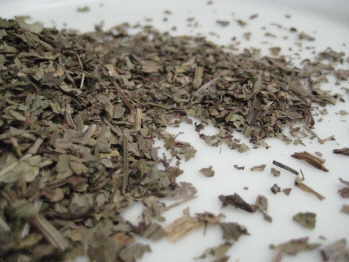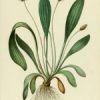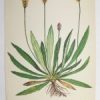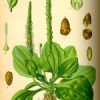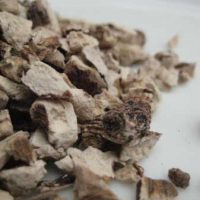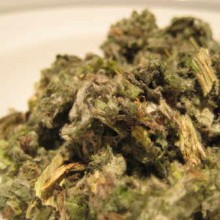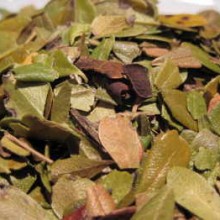Plantain Leaf (Plantago major) is an annual or perennial weed. This rosette forming plant has many broad and rounded long stalked leaves. Each leaf is almost hairless and they can grow up to 8 inches long. All of the leaves have well defined veins. Plantain is a very common weed found throughout the world. It can be found in bare trodden areas, in waste lands, back yards, roadsides and near rail road tracks.
Plantain Leaf is also a highly nutritious wild edible plant, that is high in calcium and vitamins A, C, and K. The young, tender leaves can be eaten raw, and the older, stringier leaves can be boiled in stews and eaten.
There are several common forms of plantain with all differing slightly in the shape of their leaves and flower spikes. The English plantain has long narrow, upright leaves and short fat flower spikes that have conspicuous white anthers terminating from their long stems.
Plantain Leaf Uses:-
Some studies suggest that plantain may be an effective bodily aid in the maintenance of a healthy upper respiratory tract. Plantain has been approved by the German Commission E for uses related to the respiratory tract as well as maintaining healthy mucous membranes, skin, and soft tissues.
It is generally useful for its:-
antibacterial and antimicrobial properties, as well as anti-inflammatory and antitoxic. The leaves, shredded or chewed, are a traditional treatment for insect and animal bites. the antibacterial action helps prevent infection and the anti-inflammatory relieves pain, burning and itching. There is some investigation ongoing to study its affects on lowering blood sugar.
It contains many bioactive compounds, including allantoin, aucubin, ursolic acid, flavanoids, and asperuloside.
It has been suggested by some herbal authorities that due to its aucubin content which helps to expel uric acid from the body, the plant may be useful for kidney complaints and gout –

